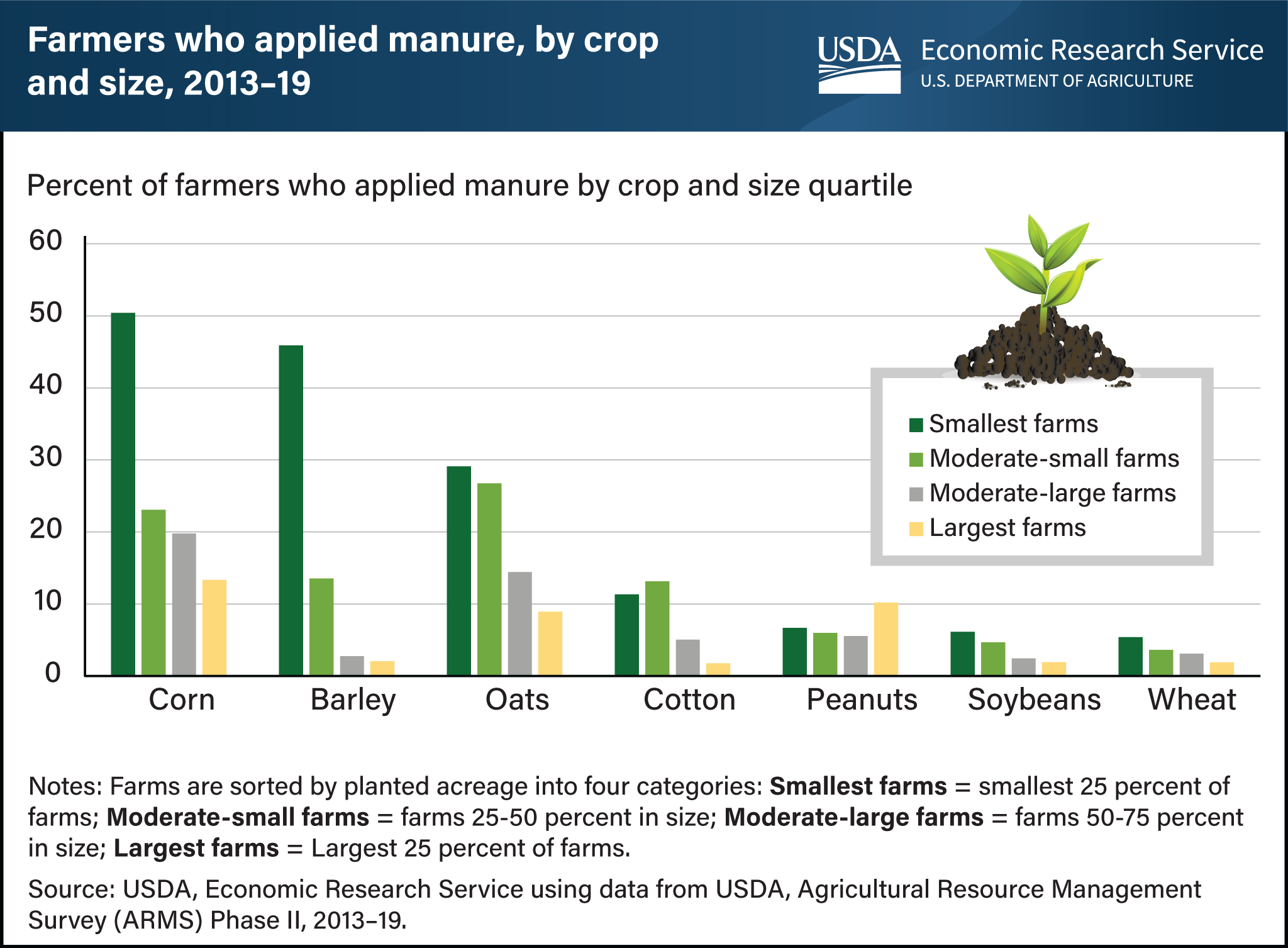Small-scale farmers are more likely to apply manure as a plant nutrient source
- by Nigel Key and Laura Dodson
- 3/23/2023

For most crops, small-scale farmers are more likely than large-scale farmers to apply manure. The smallest 25 percent of farms (by planted area) were more likely to apply manure than any other farm size group for five of seven crops studied: corn, barley, oats, soybeans, and wheat—all except cotton and peanuts. For example, among the smallest 25 percent of corn farmers, roughly half applied manure. On the other hand, only 13 percent of the largest corn farmers applied manure to their corn. This pattern of small-scale farmers using manure as a crop nutrient source more than other size farmers may be partly explained by specialization. Larger crop farms are more likely to specialize and not diversify their operations with animal production, limiting access to manure produced on the farm. Manure was applied to about 8 percent of the 240.9 million acres planted to the seven major U.S. field crops. Manure supplies nitrogen, phosphorus, and potassium to growing crops and can improve soil quality. This chart appears in the USDA, Economic Research Service report Increasing the Value of Animal Manure for Farmers, published March 2023.

